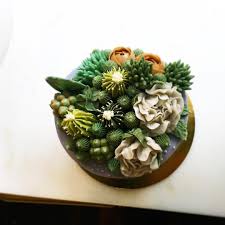Blue Willow China in Classic Famous Movies: An Icon of Elegance and Nostalgia

Blue Willow China, with its delicate blue-and-white design, has long been associated with elegance, craftsmanship, and a sense of timeless beauty. This iconic porcelain, often featuring scenes of idyllic landscapes, birds, and pagodas, has captured the hearts of collectors and decorators around the world. Its graceful imagery and rich history have made it a symbol of cultural sophistication, but its appeal extends beyond the world of antiques and home décor. Blue Willow China has also found its way into the world of cinema, making appearances in several classic films. Whether as a prop, a piece of set dressing, or a symbol of a character’s lifestyle, Blue Willow China has been a notable presence in many famous movies. This article explores the role of Blue Willow China in classic films, examining how this beloved porcelain pattern has contributed to the aesthetic and narrative of iconic cinematic moments.
1. The Historical Significance of Blue Willow China
Before diving into its presence in classic films, it’s important to understand the history and significance of Blue Willow China. The Blue Willow pattern was first produced in England during the late 18th century. Its design was inspired by Chinese porcelain, and it quickly became one of the most popular patterns in Europe and beyond. Featuring a blue-and-white color scheme, the design often depicts scenes of nature, Chinese landscapes, pagodas, and birds, as well as romanticized elements of Chinese culture, such as the tale of two lovers who are transformed into birds.
Blue Willow China quickly became a symbol of elegance and status. It was not only a favorite among collectors but also a popular item in households of the time. Its timeless design, combined with the fine craftsmanship of its makers, ensured its continued popularity through the years. The pattern’s association with tradition, beauty, and refinement made it a natural choice for filmmakers aiming to create visually striking sets, tell stories about wealth and class, or evoke a sense of nostalgia.
2. Blue Willow China in Classic Films: Symbolism and Aesthetic Value
In classic cinema, objects are often used not just for their functional purposes but also as symbols. Blue Willow China, with its rich design and association with affluence and sophistication, often served as a visual tool to emphasize a character’s social status, cultural background, or emotional state. Its appearance in films can offer insight into the characters and themes of a movie, creating a visual language that resonates with the audience.
Symbol of Wealth and Class
One of the most common uses of Blue Willow China in classic films is as a symbol of wealth and refinement. The porcelain’s fine craftsmanship and long-standing reputation for quality made it an ideal prop to underscore the elevated social status of characters. In many films, characters who are wealthy or of high social standing are often shown using Blue Willow China for their dining and social gatherings. The presence of Blue Willow China helps establish an atmosphere of elegance and class, subtly suggesting that the characters enjoy the finer things in life.
In films from the 1940s and 1950s, which often dealt with themes of high society, Blue Willow China was frequently featured in scenes set in lavish homes, dining rooms, and elegant social settings. The porcelain’s inclusion in these scenes would have instantly conveyed an air of sophistication, reinforcing the idea that the characters were part of the upper echelons of society.
Symbol of Nostalgia and Tradition
Another powerful use of Blue Willow China in classic films is as a symbol of nostalgia and tradition. The pattern’s long history, along with its associations with domestic life, evokes a sense of continuity and the passing of time. In films set in earlier eras, Blue Willow China is often used to reflect a time-honored way of life, where family meals, formal tea times, and social rituals were integral to daily existence.
For many characters, particularly those in films about family dynamics, Blue Willow China represents the connection to past generations and the values of home and hearth. It may appear as part of a cherished family heirloom, passed down through the years, or as a reminder of simpler times. In these instances, the presence of Blue Willow China is used to evoke feelings of warmth, nostalgia, and sentimental value, inviting audiences to reflect on their own personal connections to tradition and family.
Symbol of Romance and Intimacy
The romanticized elements of Blue Willow China, particularly the story of the two lovers who are transformed into birds, have made it a fitting symbol of romance and intimacy in many films. The gentle beauty of the pattern, with its serene blue tones and delicate design, often serves as a backdrop for scenes of love, longing, or emotional connection.
In some films, the presence of Blue Willow China in a romantic setting can add an extra layer of meaning to a relationship between characters. The porcelain’s symbolism of enduring love, as told through its design, serves to heighten the emotional stakes of a romantic subplot. The pattern’s association with a love story that transcends time and space gives it a powerful role in illustrating the enduring nature of love, even in the most trying circumstances.
3. Blue Willow China in Specific Classic Films
Let’s take a closer look at how Blue Willow China was utilized in some specific classic films. From romantic dramas to family-centric stories, this iconic porcelain pattern has made notable appearances that contributed to the visual and emotional impact of these films.
“The Philadelphia Story” (1940)
One of the most iconic films in Hollywood’s Golden Age, The Philadelphia Story (1940), directed by George Cukor and starring Katharine Hepburn, Cary Grant, and James Stewart, features a scene with Blue Willow China that serves as a symbol of both class and tradition. The film’s setting—wealthy Philadelphia socialite Tracy Lord’s estate—is filled with luxurious décor, and the inclusion of Blue Willow China highlights the family’s affluent lifestyle. The delicate china, with its finely crafted design, complements the character’s world of privilege and reinforces the film’s themes of love, class, and societal expectations.
In the film, the characters’ interactions at the dinner table, where Blue Willow China is used, play an important role in defining their relationships. The porcelain helps underscore the contrast between Tracy’s high society background and the more grounded, down-to-earth personas of the other characters, particularly that of Mike Connor (James Stewart). This visual cue adds to the film’s exploration of social class and romantic tension.
“Rebecca” (1940)
Alfred Hitchcock’s Rebecca (1940) is another classic film in which Blue Willow China plays a symbolic role. The film, based on Daphne du Maurier’s novel, centers around the mysterious death of a woman named Rebecca, whose presence looms over the entire story. In one particular scene, Blue Willow China appears as part of the domestic setting of Manderley, the grand estate where the story unfolds.
The china’s presence in the film reflects the household’s opulent and somewhat eerie atmosphere. The porcelain’s refined elegance contrasts with the darker elements of the story, including the haunting memory of Rebecca and the psychological drama that unfolds between the new Mrs. de Winter (Joan Fontaine) and her husband, Maxim (Laurence Olivier). In this context, Blue Willow China serves as a reminder of the contrast between outward appearances and the hidden, often uncomfortable truths that lie beneath.
“The Great Gatsby” (1974)
In The Great Gatsby (1974), directed by Jack Clayton and based on F. Scott Fitzgerald’s novel, Blue Willow China appears in several scenes that focus on the lavish and decadent parties thrown by the mysterious Jay Gatsby. The film, set during the Roaring Twenties, captures the excesses of the era, and Blue Willow China is used as part of the opulent décor to emphasize the wealth and sophistication of Gatsby’s world.
In this context, the porcelain’s delicate beauty and fine craftsmanship complement the extravagant lifestyle of the characters, particularly Gatsby (Robert Redford), whose wealth and ambition are central themes of the story. The Blue Willow China in the film serves as a subtle marker of class, reinforcing the idea that Gatsby, despite his humble origins, has managed to create a world of wealth and refinement in which he attempts to win back his lost love, Daisy Buchanan (Mia Farrow).
4. Conclusion: The Enduring Legacy of Blue Willow China in Cinema
Blue Willow China is more than just a pattern; it’s a symbol that has endured across generations and cultures. Its appearance in classic films serves not only to enrich the visual landscape of these movies but also to deepen their thematic content. Whether used to represent wealth, tradition, romance, or nostalgia, Blue Willow China has proven to be an invaluable prop that enhances storytelling and evokes powerful emotions in the audience.
In the world of cinema, Blue Willow China continues to stand as a testament to timeless beauty, craftsmanship, and the cultural significance of fine porcelain. As it continues to appear in films, both classic and contemporary, this iconic pattern will undoubtedly remain an enduring symbol of elegance and artistic expression. Through its connection to film, Blue Willow China ensures that its legacy as a beloved cultural artifact lives on for generations to come.

